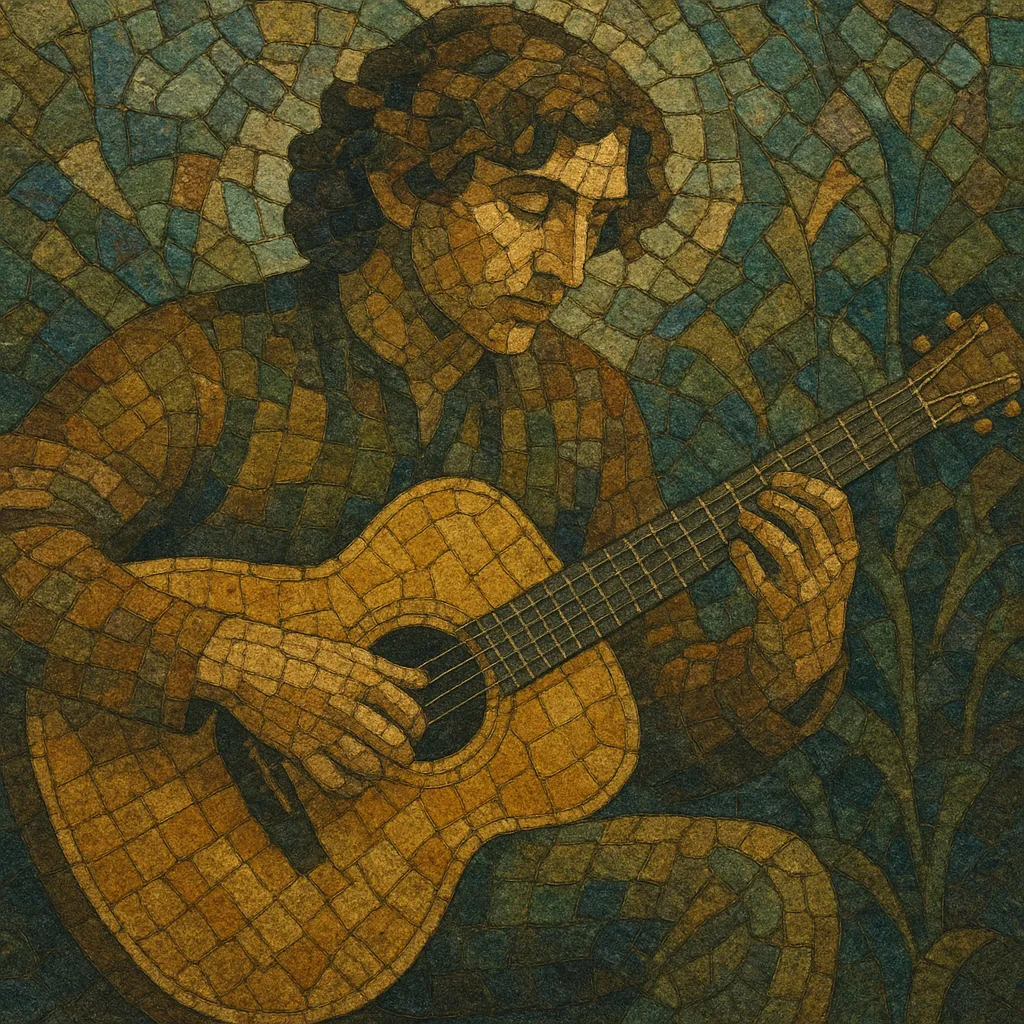
Folk baroque is a strand of the British folk revival distinguished by intricate, classically informed fingerstyle guitar on steel‑string acoustics. Players borrow contrapuntal habits from Baroque lute and classical guitar—independent bass and melody, voice‑leading, and ornamentation—then fuse them with British and Celtic traditional tunes and ballads.
The sound is modal and harmonically rich: drones, ground‑bass patterns, suspensions, and extended jazz/blues colorations are common. Alternate tunings (notably DADGAD) enable harp‑like resonance and sustained inner voices, while arrangements often feel like small chamber pieces rather than simple song accompaniments.
Folk baroque emerged during the UK folk revival when guitarists began applying Baroque/classical techniques to traditional material. A pivotal figure was Davy Graham, whose adventurous modal harmony, blues vocabulary, and exposure to North African/Arabic sounds helped popularize alternate tunings like DADGAD. His work expanded the guitar from strummed accompaniment to a self‑sufficient, counterpoint‑capable instrument.
Bert Jansch and John Renbourn crystallized the style on solo records and as members of The Pentangle. Their arrangements married English ballads to contrapuntal guitar writing, often incorporating lute‑like textures, recorder, and double bass for a chamber‑folk palette. Martin Carthy’s re‑harmonized traditional songs and Nic Jones’s later precision picking further defined the idiom.
Recordings of the period favored intimate, detailed acoustics that foregrounded right‑hand independence and left‑hand voice‑leading. Borrowed Baroque devices—ground bass, sequences, suspensions, and ornamental turns—were recast in modal folk contexts (Dorian, Mixolydian, Aeolian), producing a sound at once antique and modern.
The idiom shaped British folk rock and progressive folk arranging, informed singer‑songwriter guitar craft, and influenced later chamber folk and indie folk. Its hallmarks—alternate tunings, melodic bass lines, and contrapuntal textures—remain staples in contemporary acoustic practice.

